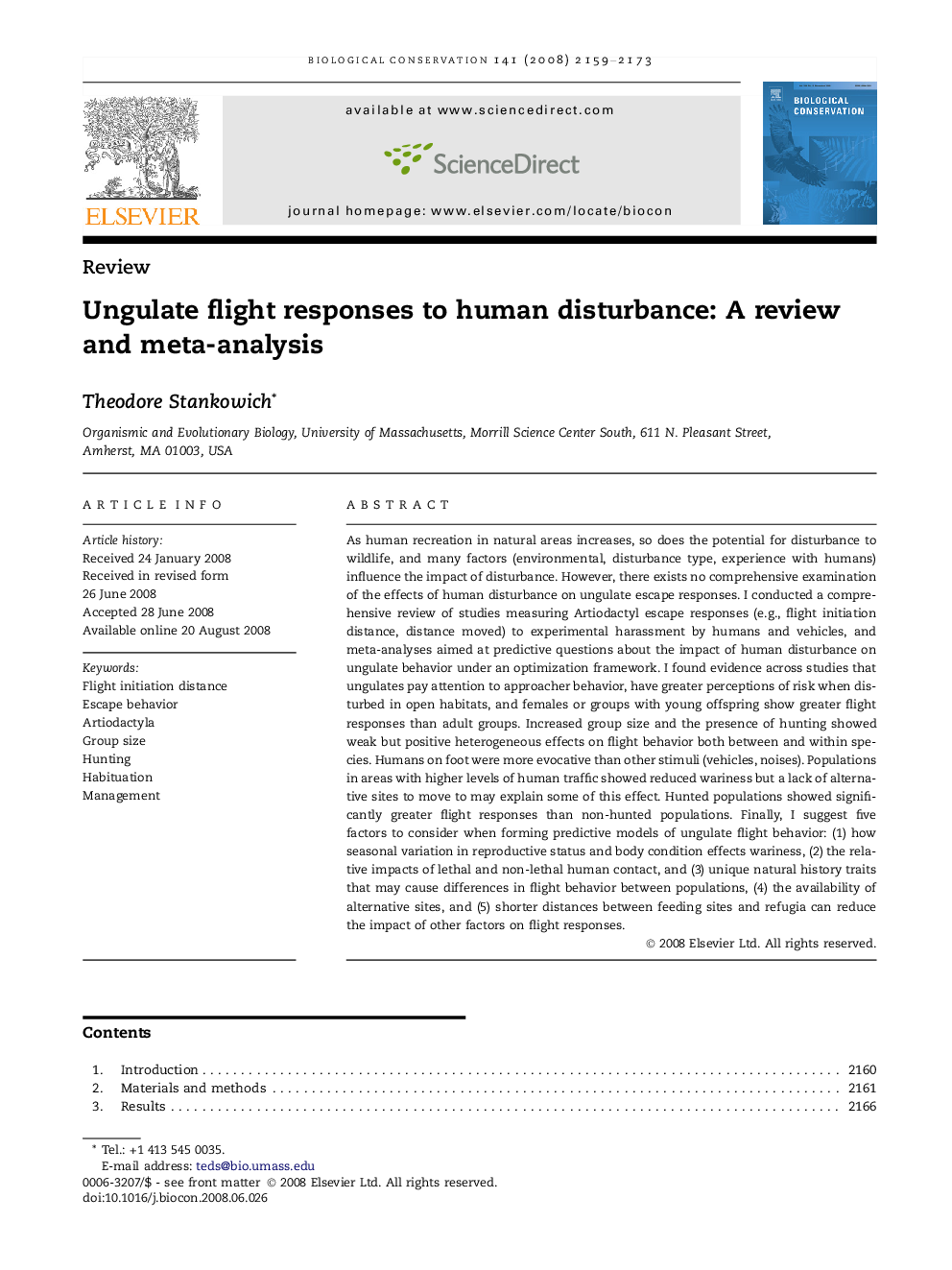| کد مقاله | کد نشریه | سال انتشار | مقاله انگلیسی | نسخه تمام متن |
|---|---|---|---|---|
| 4386805 | 1304579 | 2008 | 15 صفحه PDF | دانلود رایگان |

As human recreation in natural areas increases, so does the potential for disturbance to wildlife, and many factors (environmental, disturbance type, experience with humans) influence the impact of disturbance. However, there exists no comprehensive examination of the effects of human disturbance on ungulate escape responses. I conducted a comprehensive review of studies measuring Artiodactyl escape responses (e.g., flight initiation distance, distance moved) to experimental harassment by humans and vehicles, and meta-analyses aimed at predictive questions about the impact of human disturbance on ungulate behavior under an optimization framework. I found evidence across studies that ungulates pay attention to approacher behavior, have greater perceptions of risk when disturbed in open habitats, and females or groups with young offspring show greater flight responses than adult groups. Increased group size and the presence of hunting showed weak but positive heterogeneous effects on flight behavior both between and within species. Humans on foot were more evocative than other stimuli (vehicles, noises). Populations in areas with higher levels of human traffic showed reduced wariness but a lack of alternative sites to move to may explain some of this effect. Hunted populations showed significantly greater flight responses than non-hunted populations. Finally, I suggest five factors to consider when forming predictive models of ungulate flight behavior: (1) how seasonal variation in reproductive status and body condition effects wariness, (2) the relative impacts of lethal and non-lethal human contact, and (3) unique natural history traits that may cause differences in flight behavior between populations, (4) the availability of alternative sites, and (5) shorter distances between feeding sites and refugia can reduce the impact of other factors on flight responses.
Journal: Biological Conservation - Volume 141, Issue 9, September 2008, Pages 2159–2173